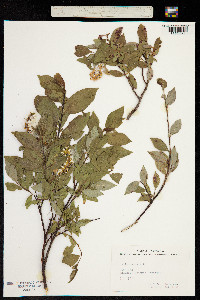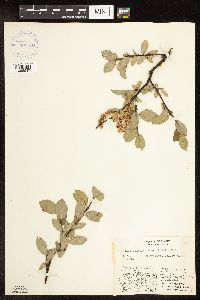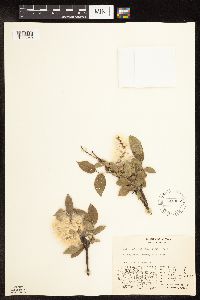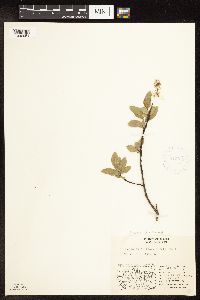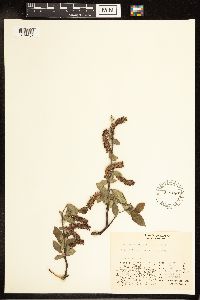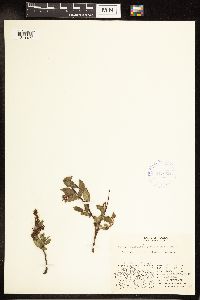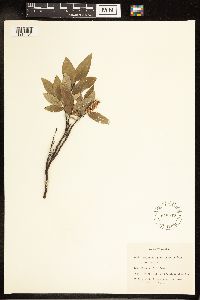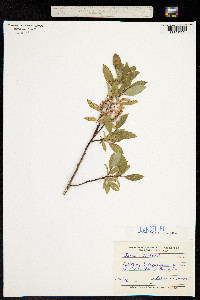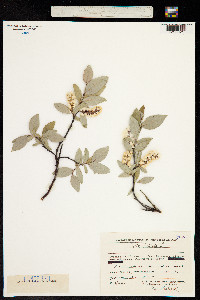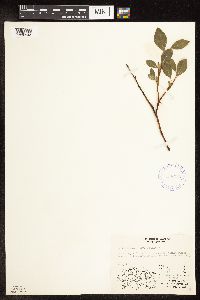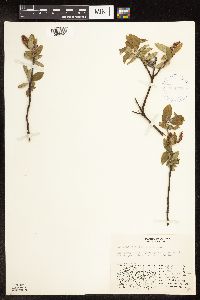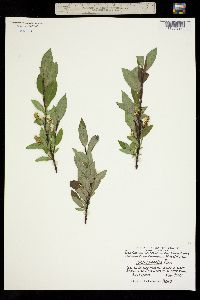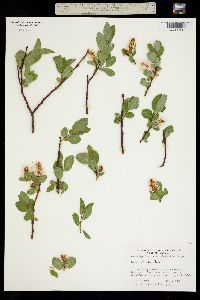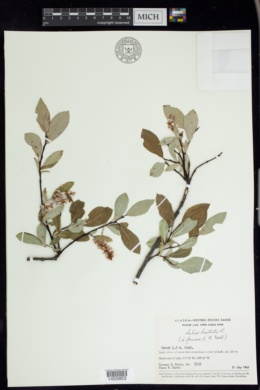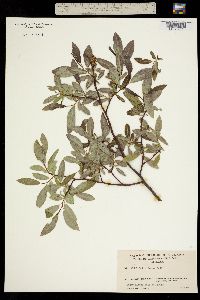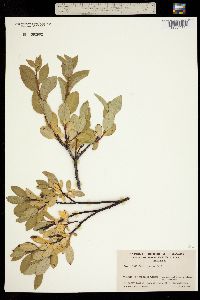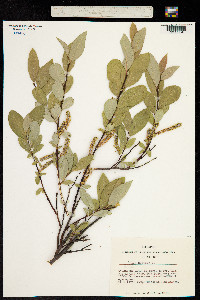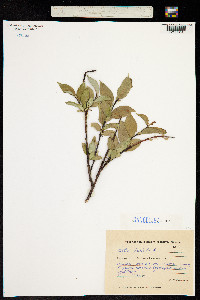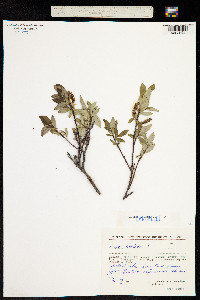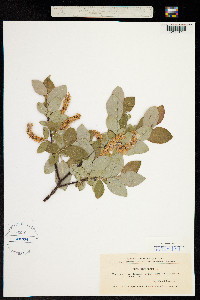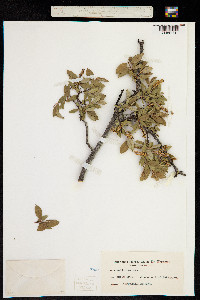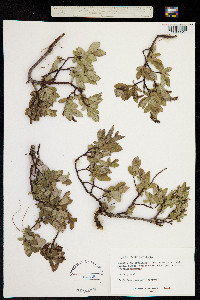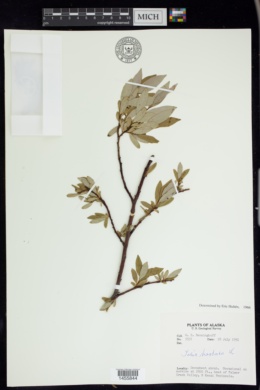Salix hastata
|
|
|
|
Family: Salicaceae
Halberd Willow
|
Plants 0.2-4 m. Stems: branches reddish brown, not glaucous, (slightly glossy), pilose; branchlets yellow-brown or red-brown, villous or pilose. Leaves: stipules foliaceous, apex acute to acuminate; petiole convex to flat, or shallowly grooved adaxially, 2-6(-9) mm, pilose or villous adaxially; largest medial blade narrowly to broadly elliptic or narrowly ovate to ovate, 25-92 × 10-45 mm, 1.5-2.6(-3.4) times as long as wide, base convex, cuneate, or rounded, margins slightly revolute or flat, shallowly serrulate or entire, apex acuminate, acute, or convex, abaxial surface glaucous, sparsely pubescent, hairs wavy, adaxial dull to slightly glossy, pilose, sparsely pubescent or glabrous, midrib hairy, (hairs white and ferruginous); proximal blade margins entire or finely serrulate; juvenile blade sometimes reddish, sparsely pubescent abaxially, hairs white, sometimes also ferruginous. Catkins flowering as leaves emerge; staminate slender, stout, or subglobose, 14.5-34.5 × 8-12 mm, flowering branchlet 1-7 mm; pistillate moderately densely or loosely flowered, slender or stout, 21-59 × 6-16 mm, flowering branchlet 1.5-9 mm; floral bract brown or bicolor, 1.2-1.8 mm, apex acute to rounded, abaxially glabrate to hairy, hairs straight to wavy. Staminate flowers: adaxial nectary oblong or square, 0.3-0.7 mm; filaments distinct or basally connate, glabrous; anthers purple turning yellow, 0.4-0.6 mm. Pistillate flowers: adaxial nectary square or obovate, 0.3-0.6 mm, usually shorter than stipe; stipe 0.4-1.2 mm; ovary pyriform, glabrous, beak gradually tapering to styles; ovules 12-22 per ovary; styles connate (sometimes distinct 1/2 their lengths), 0.2-0.5 mm; stigmas flat, abaxially non-papillate with rounded tip, or broadly cylindrical, or 2 plump lobes, 0.2-0.32-0.44 mm. Capsules 3.2-8 mm. 2n = 38. Flowering early Jun-late Jul. Sandy and gravelly river bars and floodplains, lakeshores, sand dunes and blowouts, Dryas tundra, alpine sedge meadows, balsam poplar thickets, openings in upland spruce-willow forests; 0-1200 m; N.W.T., Yukon; Alaska; Eurasia (Norway, Russia, Siberia). Salix hastata is characterized by branches pilose with short, curved hairs; juvenile and mature leaves with white or ferruginous hairs adaxially, glaucous or not abaxially; and ovaries often reddish. See 61. S. barclayi and 64. S. farriae. Subspecies subintegrifolia, characterized by entire or subentire leaf margins, is recognized in Flora Nordica as the major northern Eurasian race of Salix hastata, and is described as occurring across Russia into northwestern North America (B. Jonsell and T. Karlsson 2000+, vol. 1). Because leaf marginal toothing is highly variable throughout the species range (E. Hultén 1967), the subspecies is not recognized here or in Russia (A. K. Skvortsov 1999). Hybrids: Salix hastata forms natural hybrids with S. barclayi.
|



















